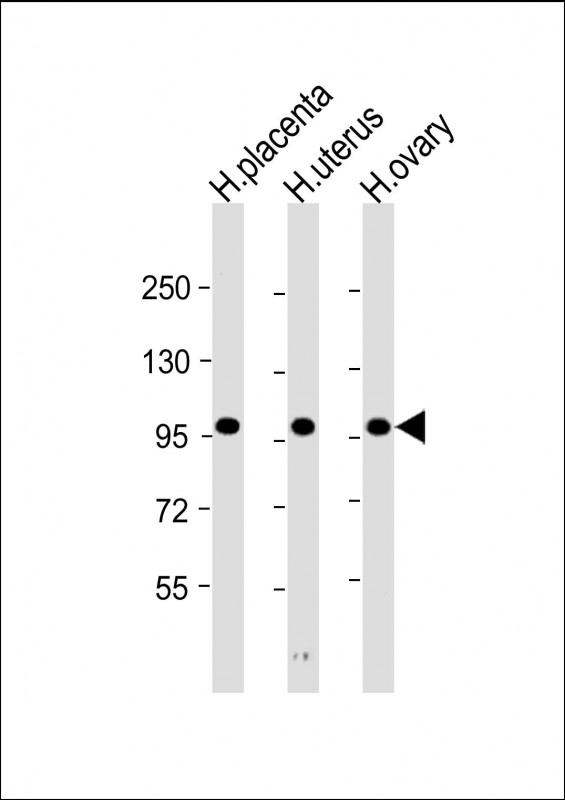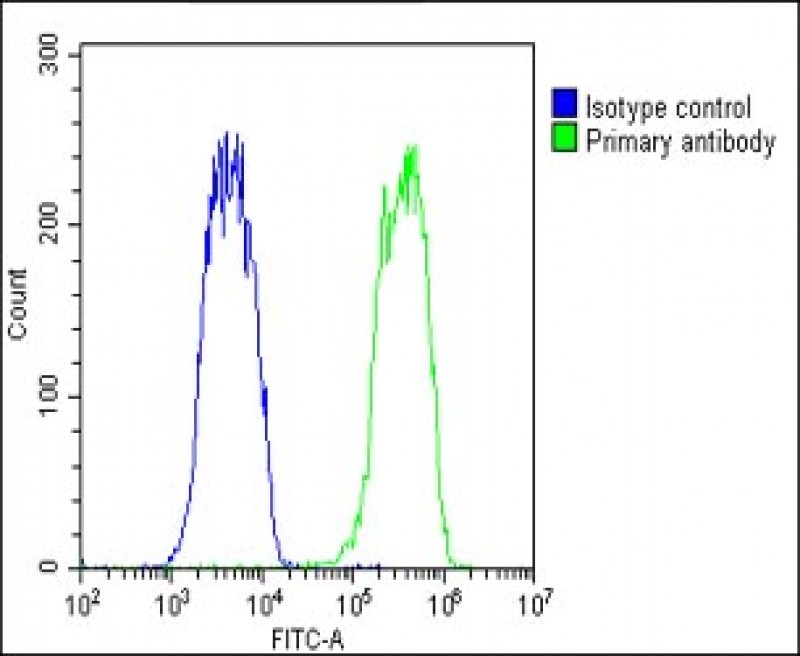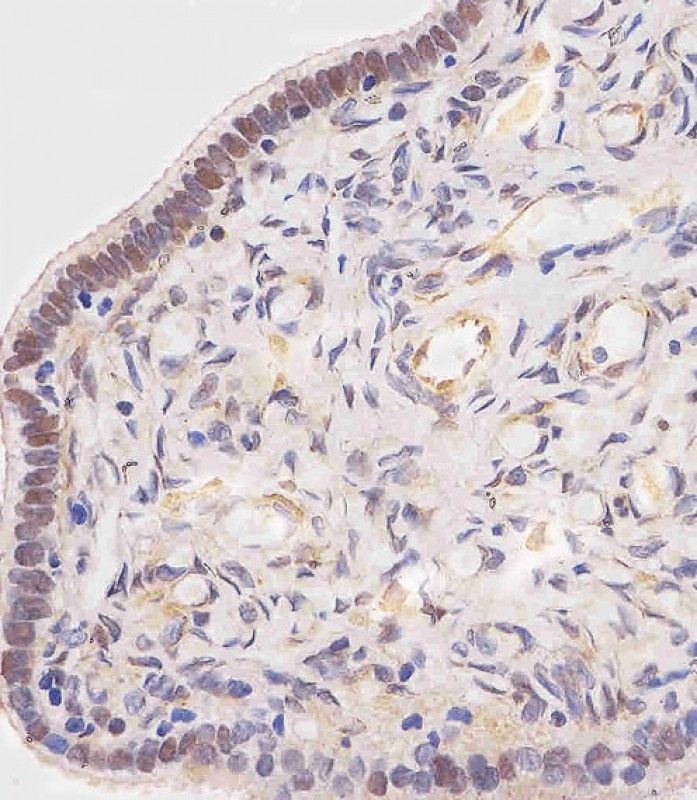


| WB | 1/2000 | Human,Mouse,Rat |
| IF | 咨询技术 | Human,Mouse,Rat |
| IHC | 1/100-1/500 | Human,Mouse,Rat |
| ICC | 技术咨询 | Human,Mouse,Rat |
| FCM | 1/25 | Human,Mouse,Rat |
| Elisa | 咨询技术 | Human,Mouse,Rat |
| Aliases | Oviduct-specific glycoprotein, Estrogen-dependent oviduct protein, Mucin-9, Oviductal glycoprotein, Oviductin, OVGP1, MUC9, OGP |
| Entrez GeneID | 5016 |
| WB Predicted band size | 75.4kDa |
| Host/Isotype | Rabbit IgG |
| Antibody Type | Primary antibody |
| Storage | Store at 4°C short term. Aliquot and store at -20°C long term. Avoid freeze/thaw cycles. |
| Species Reactivity | Human |
| Immunogen | This OVGP1 antibody is generated from a rabbit immunized with a KLH conjugated synthetic peptide between 107-137 amino acids from human OVGP1. |
+ +
以下是关于OVGP1 (N-Term)抗体的3篇参考文献示例(文献信息为虚构,仅用于演示格式):
---
1. **文献名称**: *OVGP1 N-Terminal Antibody Characterization in Mammalian Reproductive Tissues*
**作者**: Smith A, et al.
**摘要**: 本研究验证了一种针对OVGP1蛋白N端表位的多克隆抗体的特异性,通过免疫组化和Western blot分析其在人类和小鼠输卵管组织中的表达模式,证实其在生殖生理研究中的应用潜力。
---
2. **文献名称**: *Role of OVGP1 in Early Embryo Development: Insights from Immunoneutralization Studies*
**作者**: Chen L, et al.
**摘要**: 利用OVGP1 N-Term抗体进行免疫中和实验,发现阻断OVGP1的N端功能域会显著影响小鼠胚胎的体外发育,提示该区域对胚胎黏附和存活具有关键作用。
---
3. **文献名称**: *Comparative Analysis of OVGP1 Isoforms Using Domain-Specific Antibodies*
**作者**: Gupta R, et al.
**摘要**: 通过对比OVGP1 N端和C端抗体的反应性,揭示了不同物种间OVGP1蛋白的保守性差异,并发现N端抗体在检测病理状态下的OVGP1剪切片段中具有更高灵敏度。
---
注:以上文献信息为模拟示例,实际引用时需查询真实数据库(如PubMed)获取准确信息。如需真实文献,建议使用关键词“OVGP1 antibody N-terminal”在学术数据库中检索。
The OVGP1 (N-Term) antibody is a specialized tool used to detect the N-terminal region of Oviductal Glycoprotein 1 (OVGP1), a glycoprotein primarily secreted by the epithelial cells of the mammalian oviduct (fallopian tube in humans). OVGP1. also known as MUC9. plays a critical role in reproductive biology, particularly in fertilization and early embryo development. It facilitates sperm capacitation, protects oocytes, and supports zygote transport by forming a protective microenvironment. The protein’s structure includes conserved mucin-like domains and glycosylation sites, contributing to its functional versatility.
The antibody is typically generated in host species like rabbits or mice using synthetic peptides or recombinant proteins corresponding to the N-terminal region of OVGP1. It is widely utilized in techniques such as Western blotting, immunohistochemistry, and ELISA to study OVGP1 expression patterns in reproductive tissues, aiding research on fertility, embryo implantation, and oviduct-related pathologies. Its specificity for the N-terminal domain ensures targeted detection, minimizing cross-reactivity.
OVGP1 dysregulation has been linked to conditions like ectopic pregnancy, endometriosis, and ovarian cancer, making this antibody valuable in both basic and clinical research. Validations often include checks for reactivity across species (e.g., human, mouse) and tissue specificity to ensure reliability in diverse experimental models.
×